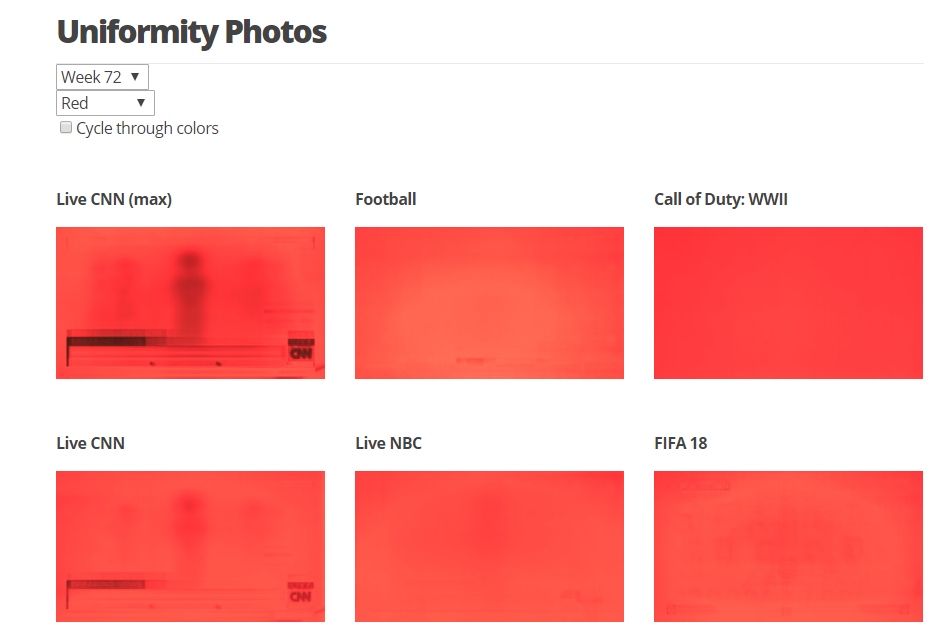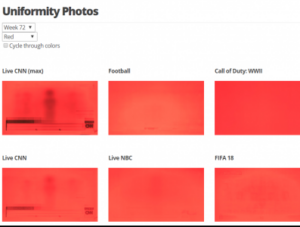There’s no doubt that dual layer LCD is a bit of a hot topic at the moment and one of the comments we got last week after Ken’s article (OLED and Dual Cell TV: The Battle Commences) asked why the technology is needed. It seems to me there are two big factors.

The first is the issue of the supply chain and the development of the LCD industry. The push by the Chinese to dominate LCD manufacture over recent years is continuing and more fabs are going to appear. New fabs make a lot of panels and they will be big panels. However, the Chinese TV brands will also want to move up-market to try to challenge Samsung, LG and Sony in the premium segments and that means competing with OLED, or supplying OLED.
There are also huge technical challenges in making large OLEDs – which is why LG has to use a very inefficient and inelegant method (based on patents that it acquired from Kodak) to make the panels and why Samsung abandoned its first attempt to make large OLEDs and seems to be hesitating about a second attempt. The technical challenges means that Chinese OLED developers are several years behind the Koreans, although they are trying hard to catch up.
So, the Chinese want to compete with OLED in the premium segment, but don’t have the means to do it with their own OLEDs, so they have to exploit what they do have, which is LCD. I do think they will struggle to make products that can meet the energy requirements for TVs in Europe and the US (I don’t know if there are stringent requirements in China – if you do, please leave a comment below). This will especially be the case for 8K sets. As I have already written, (Samsung’s Colour Performance Seems to Have Reduced with 8K) Samsung is challenged already to meet emerging energy level requirements with its 8K sets. Add dual panel and that compounds the problem.
OLED’s Dirty Little not-so-Secret
The other issue that is still something of a concern to me and to quite a lot of others is the issue of burn-in on OLEDs. This is a well established problem and is acknowledged in the broadcast industry. In November last year, the EBU issued guidelines (downloadable here) on how content creators can minimise ‘image retention’ in OLED broadcast monitors (although it’s acknowledged that image sticking can also be an issue for LCDs). That includes recommendations that even with SDR content, the brightness of static images is severely limited (to 40% peak white) and 47% of reference white (35% of peak white level for HDR signals using HLG). It also advises that saturated colours should be avoided on static images.
As we reported from IBC last year, Sony has switched to dual layer LCD for broadcast monitors and it seems likely that this kind of issue was one of the factors (along with limited peak brightness and colour volume for OLEDs and probably a better supply situation for LCD) in that decision.
Now, LG Display constantly says that burn-in is not a major problem in the ‘real market’ for domestic TVs and that seems to be the case. Nevertheless, LG Electronics and the other OLED TV companies all exclude burn-in from their warranties and last time we talked about this problem, we had comments from very unhappy consumers who are really disgruntled. See the comments to Ken’s article (OLED is Everybody’s Favorite Display, but…) for a flavour.
Frankly, it’s one of the reasons that I haven’t yet bought an UltraHD OLED and still have my FullHD Panasonic Plasma. I’d hate to be one of those, even if it is a very limited number, that really has problems with screen burn, even though I don’t watch much with static content (and have kept my eye on the recommendations and tests at Rtings.com – some of the best testing that I am aware of). I’d quite like 4K, but the STB that my provider, Sky, offers doesn’t do what my current satellite system does, so it’s not a pressing need.
 This is one of the RTings Screen uniformity images – it’s worth a look at all of them.
This is one of the RTings Screen uniformity images – it’s worth a look at all of them.
I can see that if set makers simply accept that burn is a warranty issue, consumers will not take action to minimise static content and that would lead to a lot of returns and complaints. However, it seems to me that it might be possible to actually track what kind of images are being shown and warn clients. If viewers ignored this kind of warning, the set maker would be in a much stronger position to walk away from warranty claims. On the other hand, those that really want to enjoy the undoubted image quality of a well set up OLED, such as me, would feel more relaxed about purchases. (I understand that the LG sets will actually blank the screen when some bright static images are on the screen for more than a couple of minutes and reduce the brightness/saturation of some static logos, but I haven’t tried this).
As far as I am aware, there has been no legal case in Europe, where there are strong consumer protection laws, but it’s not obvious to me that the current warranty situation is defensible against claims that current OLEDs are not fit for purpose. Then again, I’m not a lawyer and the big brands have, presumably, taken legal advice on this. (BR)

